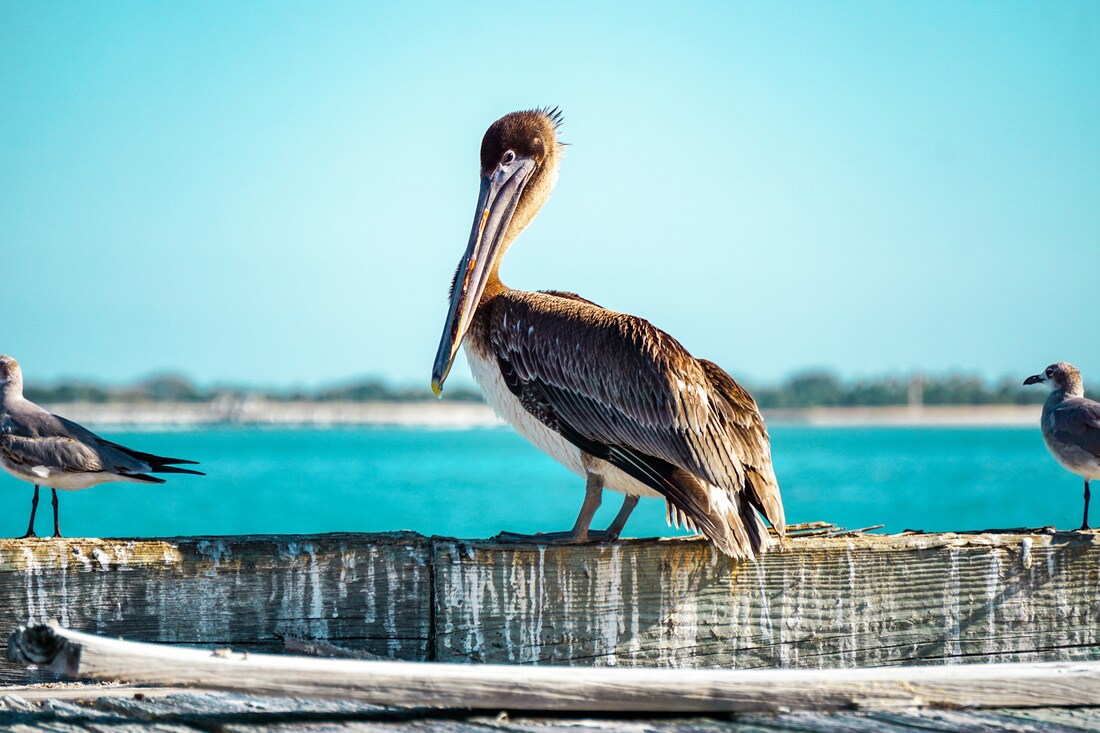|
Picture this: it is another sunny day in Florida, and you are out fishing for the biggest grouper you can catch, so you cast your line, and uh-oh, you caught a pelican! The bird is flailing like an inflatable tube man, and you begin to panic, but then you realize that these things happen. In July of 2019, Avian Hospital Director Melissa Dollard of the Seaside Seabird Sanctuary released a video about removing fishing hooks from pelicans, and the sanctuary reported that their staff treats around 200 birds per month for injuries related to fishing hooks and line entanglements. Additionally, a study that was conducted through Eckerd College for one year between 2019-2020 observed 3,766 Brown Pelicans across 144 viewings on four different piers in Tampa Bay and found that 254 (7%) of them became entangled in fishing lines. In this study, the researchers note that entangled pelicans are susceptible to injury or death without proper intervention. According to the Florida Fish and Wildlife Conservation Commission (FWC), when you hook a pelican (or any other bird), you need to reel it in, remove the hook and line, then release it. So, once you realize that the pelican is hooked, slowly reel it in and scoop it up with a net. Then, take a gentle but firm hold of its head in the area behind its eyes, pick up the bird folding its wings down, and hug its legs to its stomach. For pelicans, you can then remove the hand that is holding the back of its head and place it over its beak, allowing the beak to be partially open for normal breathing. Furthermore, to help keep it calm, you can cover the bird’s head with a clothing item or a cloth. Make sure the hook is pushed through the bird’s skin so that the barb is exposed, cut the barb, slide the remaining portion of the hook out, clip away any entangling lines, and release the bird by pointing its beak towards the water and stepping back as you let it go. It may hesitate momentarily before flying off. For an illustrative guide on proper hook removal, check out this brochure made by the FWC and this video made by Seaside Seabird Sanctuary. When possible, ask someone nearby for help with the process and wear sunglasses to protect your eyes from the bird’s beak. If the pelican seems seriously wounded, has swallowed the hook, or is behaving lethargically, call a local veterinarian or rehabilitator and stay with it until the professionals arrive. It is important to stay mindful when fishing. To avoid attracting birds while you fish, throw extra bait fish back into the ocean. Refrain from feeding them, and fileted fish carcasses, to the birds. Many fish-eating birds typically eat small fish and are unable to digest the larger bones of bigger fish, which can cause internal puncture wounds if eaten. In addition, dispose of used and broken fishing gear properly, placing cut lines into monofilament recycling bins or breaking them into pieces less than 3 inches long before disposing of them in lidded garbage receptacles. Otherwise, remember, when in doubt about your safety or the bird’s condition, contact the professionals for help. For a complete list of bird rehabilitators near you, call the FWC at 1-888-404-3922. Article by Ema Tibbetts
0 Comments
Your comment will be posted after it is approved.
Leave a Reply. |
CATEGORIES |
|
|
Vertical Divider
|
Can't get enough?Uncover more of Florida through our channels below!
|
© COPYRIGHT 2015. ALL RIGHTS RESERVED.


 RSS Feed
RSS Feed